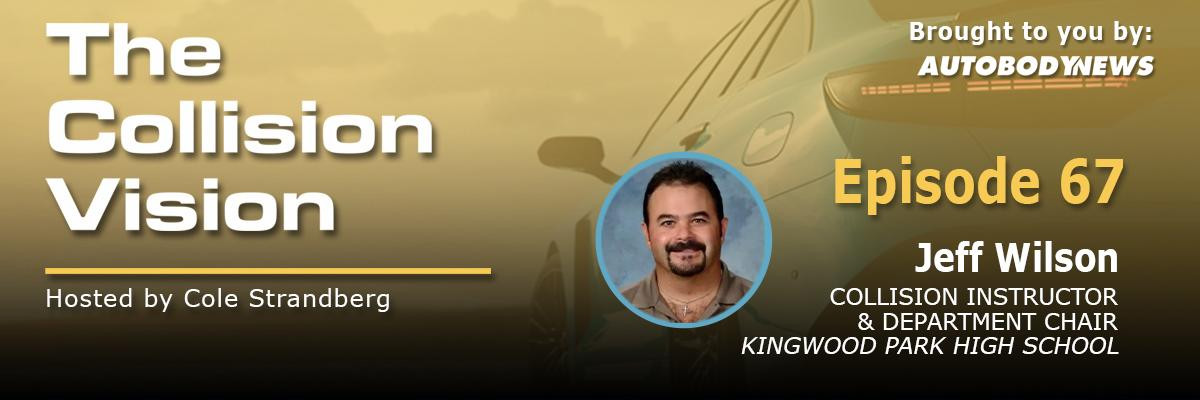We’ve talked about recruiting and retention a ton here on The Collision Vision. We’ve also talked training and career mapping. But we’ve never gone to the source, to the very beginning of the supply chain of collision repair talent -- straight to the schools themselves.
This week's guest is Jeff Wilson, collision instructor and department chair at Kingwood Park High School, where he is currently teaching 88 students in his collision repair program. Wilson and host Cole Strandberg will talk about the foundational stage of the future of the collision industry, recruiting the next generation of technicians, retaining this young talent, and much more.
Episode Overview
Wilson's story is a unique blend of a family legacy in automotive services, a fervent dedication to education, and an intriguing Texas rodeo background. He has played a pivotal role in the development of Kingwood Park High School's collision repair program since its establishment in 2007.
The program stands as a shining example of the impact of experiential learning and active industry involvement. With enrollment numbers reaching 88 students across various courses -- including automotive basics, collision repair, refinishing and a practicum offering real-world experience -- the program serves as a magnet for aspiring talent.
What is it that draws students to the field of collision repair? Wilson points to early exposure to the craft and the captivating aspects of custom painting and body work. By engaging students as early as the eighth grade and fostering robust connections with local businesses, Wilson's program effectively highlights the myriad of career opportunities within the collision repair sector.
During their conversation, Wilson emphasized the significance of local career fairs, networking events and the strategic use of social media in drawing in potential students. The goal is to present collision repair as an attractive and viable career option, one that offers a variety of roles beyond just manual labor.
Yet, the hurdle of attraction is only the beginning; retention of talent is just as critical. Wilson noted that about 28% to 30% of his students pursue careers in the collision repair industry. To bolster these figures, he advocates for greater industry participation in career fairs and the establishment of educational partnerships.
Students graduating from Wilson's program are well-prepared, with certifications in non-structural and refinishing from I-CAR, as well as HVAC and EPA training. This equips them to enter the workforce as proficient entry-level technicians, capable of meeting the demands of contemporary body shops.
The collision repair industry is grappling with a shortage of technicians, a challenge Wilson believes can be mitigated by aligning the high-tech nature of modern vehicles with the innate technical skills of the youth. By showcasing the practical application of their abilities, the industry can attract more young people to consider a career in collision repair.
Key Takeaways
Join local automotive advisory boards: It's crucial for businesses to actively contribute to the shaping of educational programs by offering their insights and expertise.
Reach out to instructors: Fostering communication between industry professionals and educators is essential for ensuring curricula meet the evolving needs of the industry.
Recognize the value of education: It's important to acknowledge that students from programs like Wilson's are well-prepared, with certifications and hands-on experience, making them valuable additions to any body shop.









